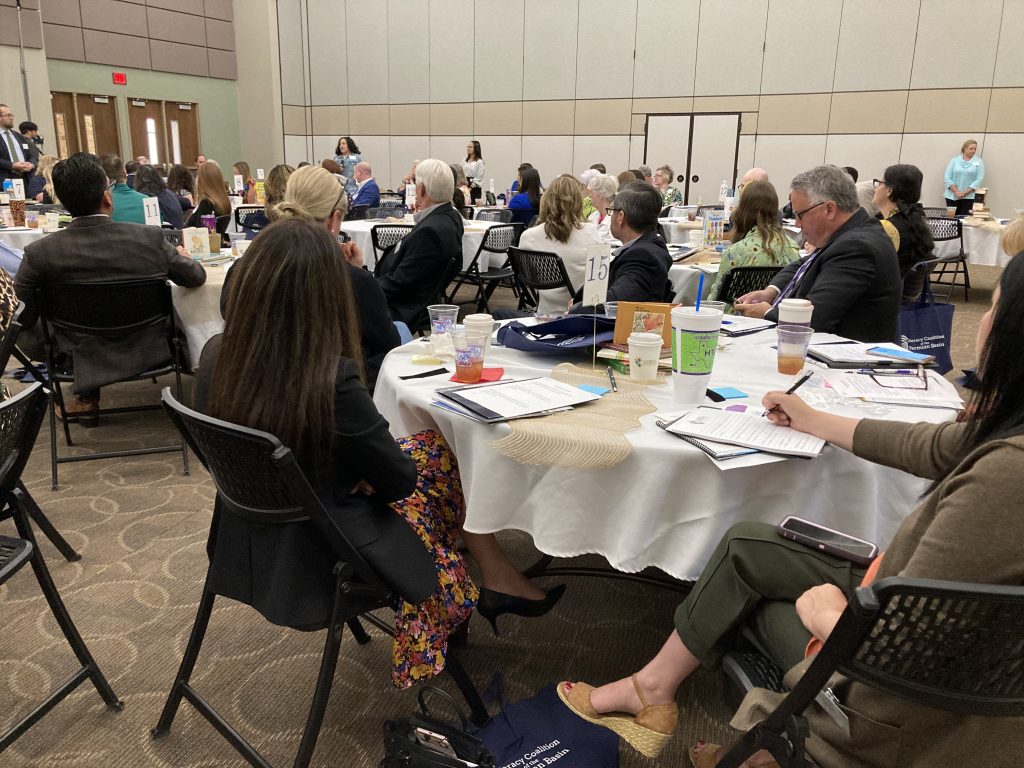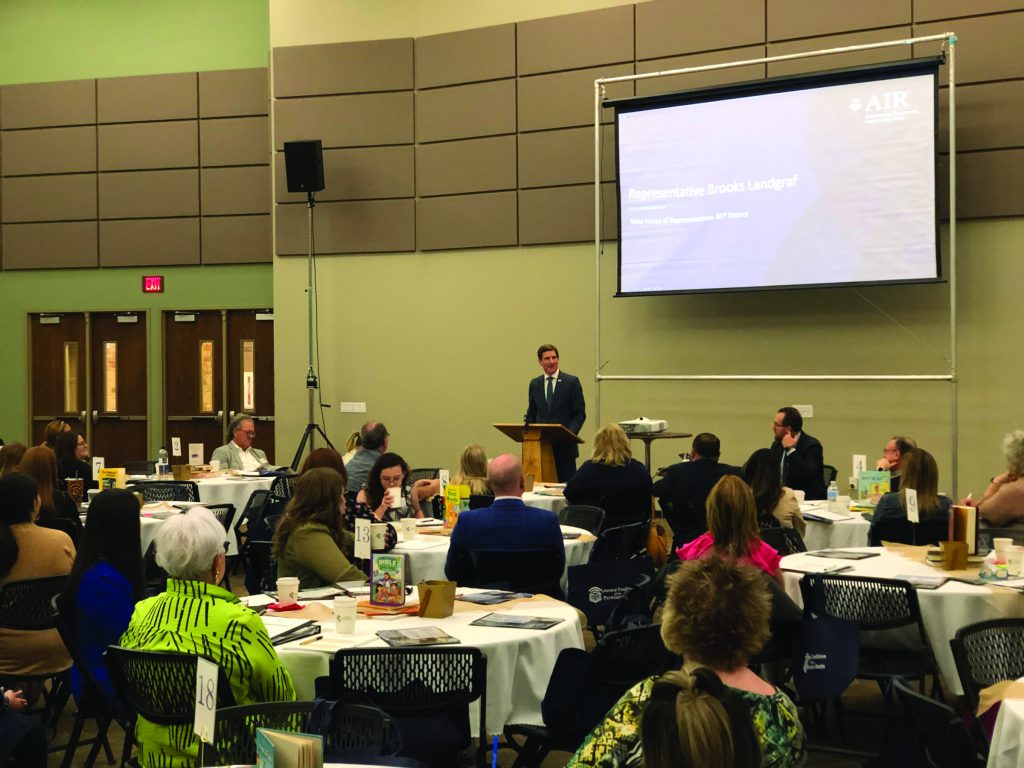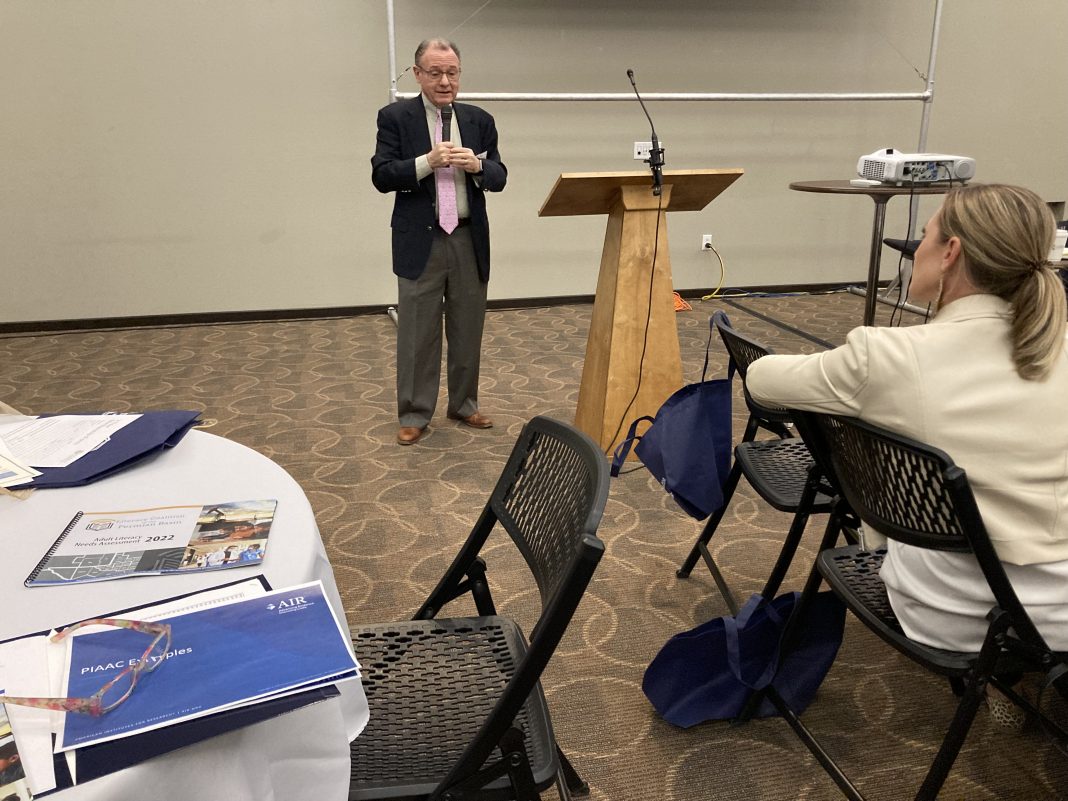MONAHANS Filling out job applications, reading prescription bottles, getting promoted at work or getting work are some of the ways literacy impacts people’s lives.
The newly formed Literacy Coalition of the Permian Basin brought together about 100 elected officials, business representatives, foundations and educators from around the region Tuesday at the Ward County Event Center to review data collected by the American Institutes for Research on local literacy rates.
Attendees were from throughout West Texas and Southeast New Mexico.
A Literacy Coalition of the Permian Basin needs assessment, prepared by AIR, showed the population of the Basin is expected to grow by more than 68 percent over the next 20 years and 30 percent of those jobs will require Level 3 literacy skills — “skills that require workers to navigate dense, lengthy and complicated texts and apply their understanding to new tasks and contexts.”
“The growth will drive the need for additional workers for the approximately 115,000 new jobs that will need to be filled by 2050,” the report said.

In Texas, 28 percent are at Level 1 or below; 32 percent at Level 2; and 40 percent at Level 3 or above. New Mexico is at 29 percent for Level 1 or below; 31 percent at Level 2; and 39 percent at Level 3 or above.
In the Permian Basin, most people have a low literacy proficiency.
In Ector County, 36 percent are at Level 1 or below (approximately second grade); 35 percent are at Level 2; and 29 percent are at Level 3 or above.
For Midland County, 26 percent are at Level 1 or below; 32 percent at Level 2; and 42 percent are at Level 3 or above.
In Reeves County, 50 percent are at Level 1 or below; 33 percent at Level 2; and 17 percent at Level 3 or above.
Pecos County has 44 percent at Level 1 or below; 39 percent at Level 2; and 17 percent at Level 3 or above.
Culberson County has 55 percent at Level 1 or below; 37 percent at Level 2; and 8 percent at Level 3 or above.

Rep. Brooks Landgraf, R-Odessa, gave welcoming remarks and talked to the Odessa American afterward.
“We have a crisis, not only in our country but specifically here in Texas. We always boast about the Texas miracle and being an economic juggernaut. But if we want to sustain that, we have to have a skilled workforce and you can’t have a skilled workforce without higher rates of adult literacy,” Landgraf said. “So we clearly have some improvement to make. The low rates that we have right now are, we’re leaving opportunities on the table. The Barbara Bush Foundation has released a study that indicates that if all Americans could read at a sixth grade level or higher, that that would have a positive economic impact of $2.2 trillion a year. But also that low rates of adult literacy have a societal impact … More than half of the individuals incarcerated in the United States didn’t finish high school … and so by improving adult literacy we not only have a positive economic impact, but we’re also just improving the quality of life for so many people across not only the Permian Basin but across the country.”
“I want to applaud the coalition. The work that they’re doing is unique and I think they will be able to have a blueprint for other regions in the country to follow,” Landgraf added.
Literacy Coalition of the Permian Basin Executive Director John Trischitti III said Tuesday’s gathering is the first of the conversations that will be held.
Trent Sharp, the lead for the American Institutes of Research, and Ray Perryman, president and CEO of The Perryman Group, gave an economic analysis.
Perryman said the region is 8,700 skilled workers short of where the region needs to be.
He added that what’s been done in the past is to bring workers in. But Perryman said that is not the best solution and demographics are working against the area and the country. The population also is aging.
There are 11 million job openings in the U.S., more than there have been since records have been kept, Perryman said. In Texas, he said, there are more than 900,000 openings, but the birth rate is the lowest it has ever been.
Sharp said the summit was convened because when the report was compiled they recognized that it would be good to talk about the findings and talk about the implications.
He added that it was a chance to reflect together prompt ideas for collective action at a regional scale.
MORE INFORMATION
The Program for the International Assessment of Adult Competencies literacy skills levels
At or below Level 1
- Have difficulty reading very brief texts on familiar topics to locate a single piece of information using basic vocabulary.
- Have difficulty cycling through or integrating two or more pieces of information contained in a text.
- Have difficulty navigating within digital texts to access and identify information from various parts of a document.
At Level 2
- Likely can identify simply paraphrasing or making low-level inferences.
- Struggle to understand lengthy texts (multiple pages), navigate more complex online digital documents, or evaluate one or more pieces of information.
- Struggle to compare, contrast, or reason about information provided.
At or above Level 3
- Likely can navigate and understand texts that are multiple pages or are a complex digital format.
- Likely can identify, interpret, or evaluate one or more pieces of information that may require varying levels of inference.
- Likely can perform tasks that require respondent to construct meaning across large chunks of texts or perform multi-step operations.
Source: AIR.org




